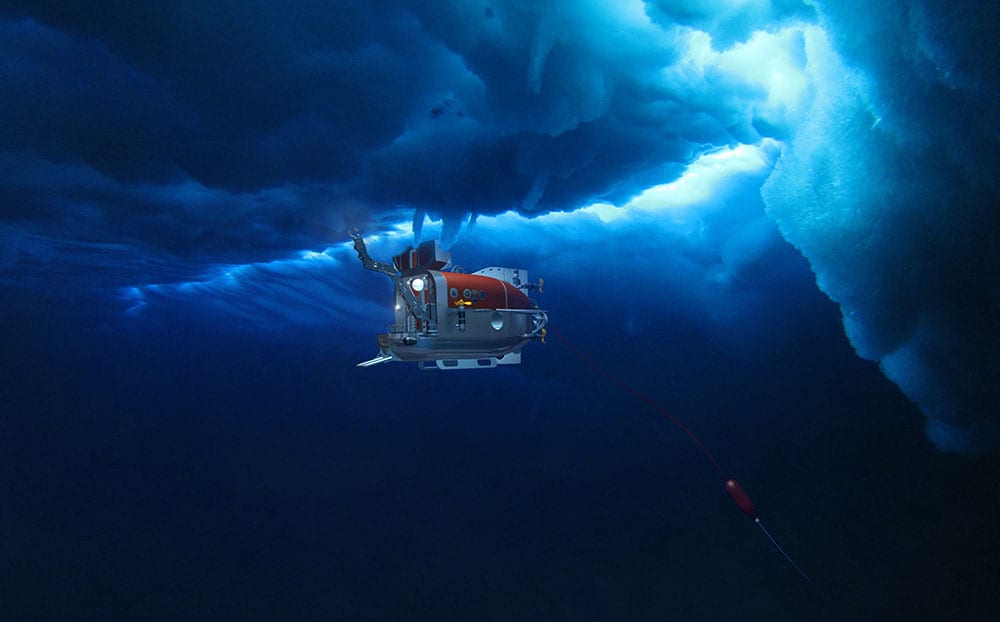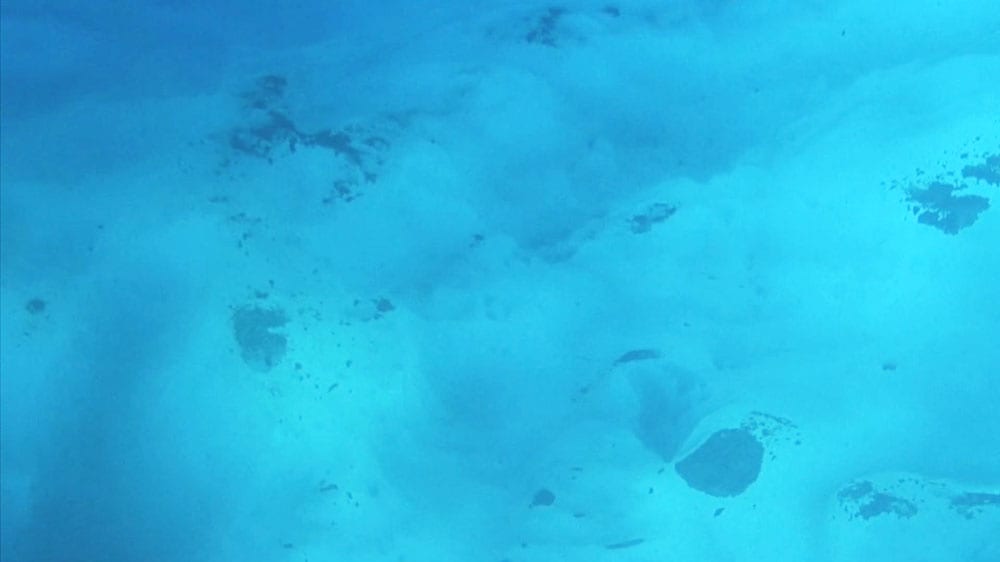Technical Overview
The Nereid Under-Ice (NUI) vehicle enables exploration, detailed examination, and sampling of biological and physical ice-margin and under-ice environments through the use of high-definition video and a 7-function electro-hydraulic manipulator arm, in addition to a range of acoustic, chemical, and biological sensors tailored to suit the needs of an individual expedition. The goal of the NUI system is to provide scientific access to under-ice and ice-margin environments that is presently impractical or infeasible.
In July 2014, NUI successfully completed it's first under-ice field expedition from aboard the Alfred Wegener Institute's ice-breaker Polarstern. In addition to conducting engineering trials, the vehicle was equipped with various biological sensors for studying near-ice primary productivity (a comprehensive pumped fluorometry system (SUNA nitrate, Eco Triplet FL/BB/CDOM, SBE25+ CTD, FRRF, PAR), hyperspectral radiance and irradiance sensors (RAMSES ACC, ARC), upward-looking still camera and and Imagenex DT100 multibeam, in addition to a Wetlabs Eco doublet Chl/NTU and SBE49 FastCAT CTD, and upward and downward looking RDI 300 kHz ADCP/DVLs. Additional information about the expedition can be found here: https://www.marum.de/en/Research/ARK-XXVIII3-2.html. The full cruise report can be downloaded here: http://epic.awi.de/37141/1/BzPM_0685_2015.pdf.
We continue to improve NUI's capabilities. Integration of a 7-function electro-hydraulic manipulator arm is underday with completion scheduled for March 2016. This addition will fully realize the potential of long-range tele-presence that the NUI system affords. More information on the integration effort is available in the slide show on the lower right-hand side of this page.
We welcome input from the Polar Science Community on how best to serve your scientific objectives.
Contact: Michael Jakuba, mjakuba@whoi.edu
Capabilities
- Real-time exploration under direct human control far from influence of host ice breaker
- HD video and real-time visualization of mapping and survey data products
- Respond to features of interest by altering sensing modality and trajectory as desired
- Vertical mobility – access to pressure-ridges, melt-pools, crevasses, general close inspection and mapping.
- Land against underside of ice or on seafloor
- Precision access to under-ice boundary layer
- Access beneath glacial ice tongues and shelves
- Manipulation, sample retrieval, and instrument emplacement capability (Mar. 2016)


